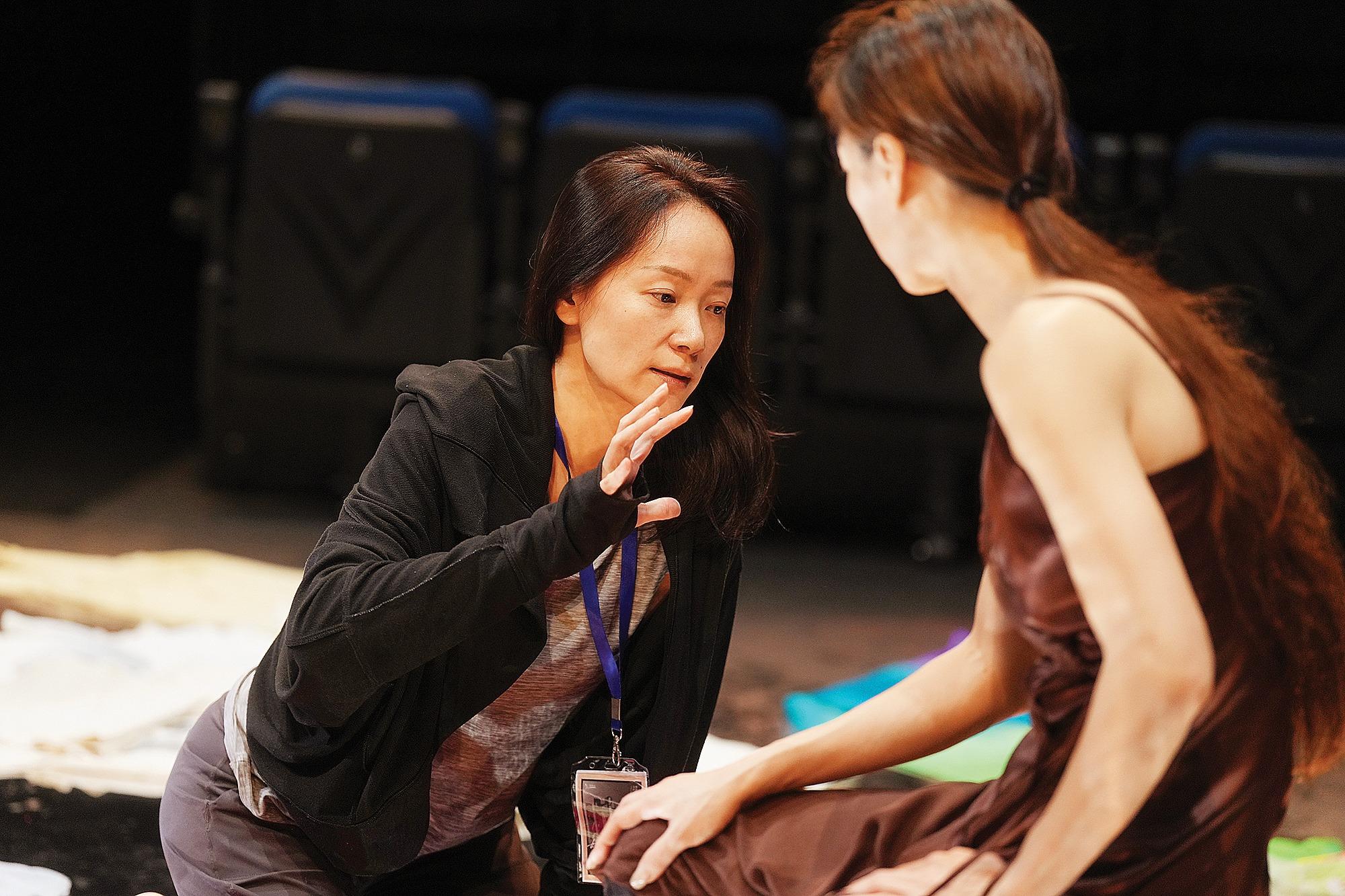 Maneuvered by the four dancers of the Hong Kong Dance Company-produced Womanhood, a red rope assumes abstract forms, bringing to mind events typically experienced by women. (PHOTO PROVIDED TO CHINA DAILY)
Maneuvered by the four dancers of the Hong Kong Dance Company-produced Womanhood, a red rope assumes abstract forms, bringing to mind events typically experienced by women. (PHOTO PROVIDED TO CHINA DAILY)
Womanhood — performed over three days last month at the Hong Kong Cultural Centre — begins with lead dancer Hua Chi-yu peeling off layer after layer of clothing from her body. These are costumes Hua has worn for various Hong Kong Dance Company productions. Taking them off is a symbolic act. It sets the tone of the show.
“The production begins with a dialogue between Hua’s stage personas and who she is in real life,” explains Womanhood’s choreographer, Xie Yin. “It’s as if Hua is casting off the roles she’s played on stage and returning to being her own true self.”
Womanhood is an attempt to depict the everyday experiences of ordinary women, and the picture that emerges isn’t always pretty. Xie wanted to explore the whole gamut of physical experiences a woman goes through in her lifetime. And that includes dealing with blood. The most dynamic stage prop in Womanhood is perhaps a thick red rope, several meters long. Now rolled tight, like a ball of desire; now strung on hooks and suspended from the ceiling, its enormous and uneven loops assume the look of an abstract sculpture. Depending on the viewer’s perspective, the rope could be any number of things — a uterus, intestines or a reclining female figure.
Xie reveals that the rope was brought in at the workshop stage of the project. “Its shape, color and feel reminded the dancers of the veins in their bodies,” she says. Hailing from different provinces of the Chinese mainland as well as Hong Kong, the dancers — Lam Yin-yi, Chen Xiaoling, Zhan Qian and Hua — would sometimes see a map of their native land in the impromptu shapes they created with the rope.
 Womanhood’s choreographer Xie Yin with lead dancer Hua Chi-yu. (PHOTO PROVIDED TO CHINA DAILY)
Womanhood’s choreographer Xie Yin with lead dancer Hua Chi-yu. (PHOTO PROVIDED TO CHINA DAILY)
More everyday objects figure in the show. In one segment, LED tubes carried by the dancers are the only light sources. It’s as though their torsos and abdomens are illuminated from within, while their faces remain in penumbral shadow. Xie says she thinks of the LED tubes as sundials — a metaphor for women’s biological clocks ticking away.
Her brief to the dancers was “to figure what their bodies might be thinking, and study the insides of their bodies minutely” — down to the last cell.
“Seldom do we try to communicate with our bodies even though we’re using them every day,” she adds. “The LED illumination was meant to encourage both the dancers and audience to look back on the different states their bodies have been through, from pregnancy to childbirth to suffering an injury.”
Womanhood also highlights the dark, unknowable, even unpleasant sides of a woman’s mind. The dynamic between the dancing quartet shifts many times over the course of the show. Companionable and tender one moment, the next sees the dancers locked in a vicious struggle — of passion or one-up(wo)manship, who knows? At one point Hua’s character turns into a nervous wreck and starts repeatedly checking her face in the mirrors. Then she tries putting all the costumes she had removed back on, but piles them on in the wrong order.
The piece ends on a cathartic note, with the dancers sorting the costumes from a chaotic heap, and laying them out on the floor in a neat arrangement while singing a nursery rhyme. As Xie explains, “The idea is that having reviewed the many roles they have played in their lives, they can now identify and organize those different experiences.”


